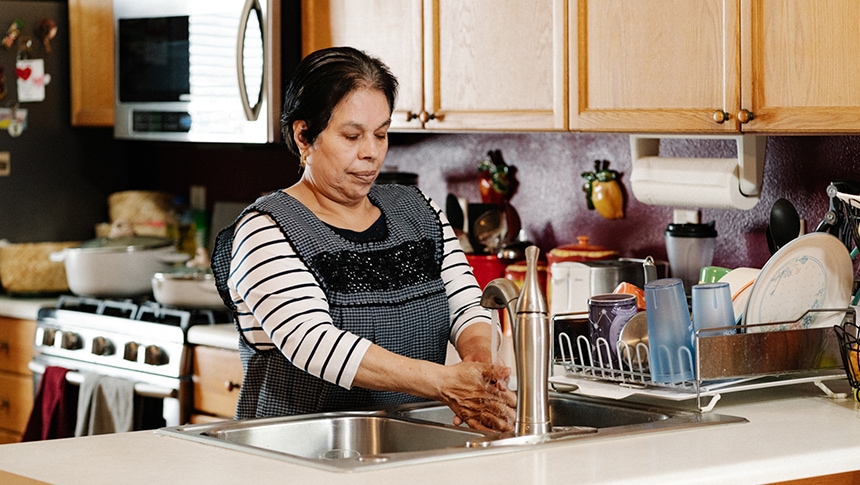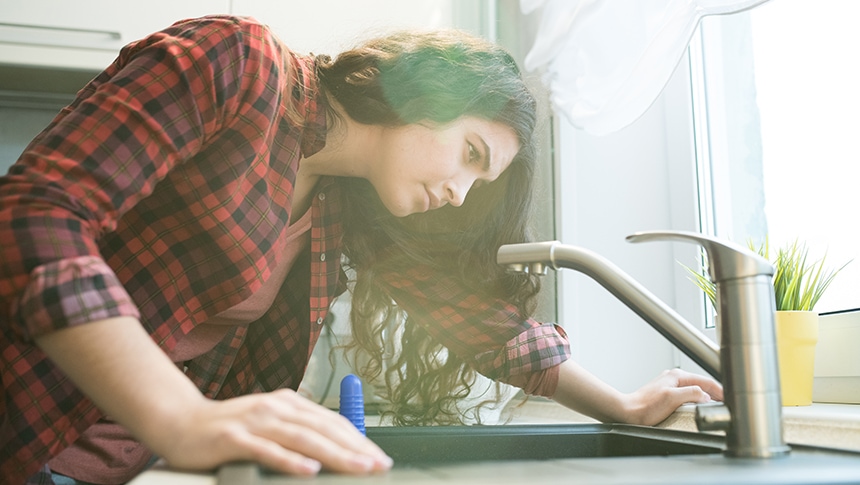Lights and electronics

- Install LED bulbs in your most frequently used lights to save the most on energy costs—kitchens and bathrooms are a great place to start. Look for the Energy Trust logo at participating retailers.
- Turn off lights when not needed and use motion sensors for outdoor lighting.
- Unplug battery chargers for mobile phones, tablets, laptops and other devices when not in use—they use energy even when they’re not actively charging anything.
- Group office and entertainment equipment on easily accessible power strips that can be switched off.
Staying comfortable

- Add weather stripping to drafty doors and windows and close storm windows during cold months, or install simple interior storm window kits.
- Apply caulking around windows to reduce drafts and improve air quality.
- Caulk small holes and cracks around ducts, pipes, exhaust fans, vents, sink and bathtub drains, fireplace and under countertops.
- Vacuum your vents regularly to keep air flowing freely.
- Close fireplace and wood stove dampers when not in use, but wait until the fire is out and the ashes are cold.
- Cover bare floors with rugs to add comfort and retain heat.
- Heat your home in winter with help from the sun by leaving window shades or blinds open during the daytime; close window coverings at night to help keep the heat in.
- Turn down the thermostat to 65–68°F during the day and 58–60°F at night during cooler months. If you have a heat pump, turn the thermostat down no more than 3°F at night. In warm weather, set your heat pump or air conditioner to 72–75°F.
- Use ceiling fans to push hot air down in winter and make cool air feel cooler in summer.
- Clean or replace filters regularly to help your heater or air conditioner work at peak efficiency.
- Combine fans with air conditioning—a fan circulates cool air so you can raise the thermostat and still stay comfortable.
- Use a window fan to pull cool air in on the shady side of your house and blow hot air out on the opposite side of the house.
- Skip the heat-generating oven and use your microwave on hit summer days.
- Use light-colored shades to reflect heat.
- Plant a tree to provide shade for your home.
In the kitchen and bathroom

- Use the water-saving setting on your dishwasher and scrape the food off your plates rather than using water.
- Use the energy-saver drying option on your dishwasher or let dishes air dry.
- Install efficient showerheads and kitchen and bathroom aerators.
- Keep your freezer and fridge full to help perform better—containers filled with water do the trick.
- Let hot foods cool before putting them in the fridge or freezer so they don’t have to work as hard.
- Avoid covering oven racks with foil. Food cooks more quickly when air moves freely around it.
- Shorten showers to cut hot water costs—using a timer can help you reduce shower time.
- Check your water pipes, toilets and faucets for leaks and repair any you find.
- Run your kitchen and bathroom fans to vent moisture.




